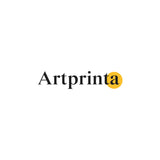Auguste Renoir, 1888 - The Daughters of Catulle Mendès, Huguette (1871–1964), Claudine (1876–1937), and Helyonne (1879–1955) - fine art print
Tax included. Shipping calculated at checkout.
In the year 1888 the male painter Auguste Renoir created the modern art piece of art "The Daughters of Catulle Mendès, Huguette (1871–1964), Claudine (1876–1937), and Helyonne (1879–1955)". The original measures the size: 63 3/4 x 51 1/8 in (161,9 x 129,9 cm). Oil on canvas was used by the French painter as the medium of the painting. Moveover, the work of art belongs to the collection of The Metropolitan Museum of Art. With courtesy of: The Metropolitan Museum of Art, New York, The Walter H. and Leonore Annenberg Collection, Gift of Walter H. and Leonore Annenberg, 1998, Bequest of Walter H. Annenberg, 2002 (license - public domain). Creditline of the artwork: The Walter H. and Leonore Annenberg Collection, Gift of Walter H. and Leonore Annenberg, 1998, Bequest of Walter H. Annenberg, 2002. In addition to that, the alignment is portrait and has a side ratio of 1 : 1.2, which means that the length is 20% shorter than the width.
Choose your preferred fine art print material
The product dropdown menu provides you with the possibility to pick the material and size of your choice. Pick your favorite size and material among the following options:
- Canvas: The canvas print, not to be mistaken with a real canvas painting, is a digital copy applied on a canvas material. The great advantage of canvas prints is that they are relatively low in weight, which implies that it is easy and straightforward to hang up the Canvas print without extra wall-mounts. Therefore, canvas prints are suited for any kind of wall.
- Aluminium dibond print: Aluminium Dibond prints are metal prints with a true effect of depth. The colors of the print are bright and luminous, fine details are crisp and clear.
- Printed poster on canvas material: The Artprinta poster print is a printed canvas paper with a slight texture on the surface, that reminds the original version of the work of art. Please note, that depending on the absolute size of the canvas poster print we add a white margin 2-6cm round about the work of art in order to facilitate the framing with your custom frame.
- Glossy acrylic glass print (with real glass coating): An print on acrylic glass, often referenced as a UV print on plexiglass, changes your favorite original artwork into amazing décor. The work of art is custom-made with state-of-the-art UV direct print machines. This creates the impression of impressive and vivid colors.
Legal disclaimer: We try our utmost to depict our art products with as many details as possible and to showcase them visually in our shop. Nonetheless, the pigments of the print materials and the print result may diverge to a certain extent from the representation on your device's screen. Depending on your settings of your screen and the quality of the surface, not all colors are printed 100% realistically. Bearing in mind that the art prints are processed and printed manually, there might as well be minor differences in the size and exact position of the motif.
The product specs
| Article type: | art copy |
| Method of reproduction: | reproduction in digital format |
| Manufacturing method: | UV direct print |
| Provenance: | made in Germany |
| Type of stock: | production on demand |
| Product usage: | wall décor, art print gallery |
| Artwork alignment: | portrait alignment |
| Aspect ratio: | 1 : 1.2 - (length : width) |
| Interpretation of aspect ratio: | the length is 20% shorter than the width |
| Available material options: | poster print (canvas paper), metal print (aluminium dibond), acrylic glass print (with real glass coating), canvas print |
| Canvas print (canvas on stretcher frame): | 50x60cm - 20x24", 100x120cm - 39x47", 150x180cm - 59x71" |
| Acrylic glass print (with real glass coating) sizes: | 50x60cm - 20x24", 100x120cm - 39x47", 150x180cm - 59x71" |
| Poster print (canvas paper) size options: | 50x60cm - 20x24", 100x120cm - 39x47" |
| Dibond print (alumnium material) size variants: | 50x60cm - 20x24", 100x120cm - 39x47" |
| Art print framing: | unframed reproduction |
Background information on the unique work of art
| Work of art title: | "The Daughters of Catulle Mendès, Huguette (1871–1964), Claudine (1876–1937), and Helyonne (1879–1955)" |
| Classification of the artpiece: | painting |
| General category: | modern art |
| Temporal classification: | 19th century |
| Year of creation: | 1888 |
| Age of artwork: | more than 130 years old |
| Original medium: | oil on canvas |
| Original dimensions: | 63 3/4 x 51 1/8 in (161,9 x 129,9 cm) |
| Exhibited in: | The Metropolitan Museum of Art |
| Place of the museum: | New York City, New York, United States of America |
| Museum's webpage: | The Metropolitan Museum of Art |
| Artwork license type: | public domain |
| Courtesy of: | The Metropolitan Museum of Art, New York, The Walter H. and Leonore Annenberg Collection, Gift of Walter H. and Leonore Annenberg, 1998, Bequest of Walter H. Annenberg, 2002 |
| Creditline of artwork: | The Walter H. and Leonore Annenberg Collection, Gift of Walter H. and Leonore Annenberg, 1998, Bequest of Walter H. Annenberg, 2002 |
Artist summary table
| Name: | Auguste Renoir |
| Artist gender: | male |
| Nationality: | French |
| Professions of the artist: | painter |
| Country of the artist: | France |
| Classification of the artist: | modern artist |
| Life span: | 78 years |
| Born in the year: | 1841 |
| Died in the year: | 1919 |
Copyright ©, Artprinta (www.artprinta.com)
(© - by The Metropolitan Museum of Art - The Metropolitan Museum of Art)
Hoping to recapture the success he had achieved with Madame Georges Charpentier and Her Children (07.122) at the Salon of 1879, Renoir sought to paint the daughters of his friend Catulle Mendès. In addition to the girls’ manifest charm, he undoubtedly counted on the notoriety of their bohemian parents to gain attention: their father was a Symbolist poet and publisher, and their mother was the virtuoso pianist Augusta Holmès. Renoir completed the commission in a matter of weeks and immediately exhibited the large canvas in May 1888, but the response to his new manner of painting, with its intense hues and schematized faces, was unenthusiastic.














